From the May 2023 issue of Apollo. Preview and subscribe here.
‘As for people who want flattering paintings of themselves,’ wrote Alice Neel in 1976, ‘even if I wanted to do them, I wouldn’t know what flattery is […] I paint to try to reveal the struggle, tragedy and joy of life.’ For this reason, Neel preferred to describe her works as ‘pictures of people’ rather than ‘portraits’, with the latter term’s connotations of elite patronage and commission.
At the Barbican, ‘Hot Off the Griddle’, a rejigged version of last year’s Centre Pompidou show, bears out Neel’s desire to get beyond flattering her subjects and to portray them with psychological truthfulness. The show opens with the late Self-Portrait (1980) in which Neel is her own subject, a nude painted over the course of five years when she was in her late 70s, in which she looks back at the viewer with a searching gaze, her glasses quizzically tilted on her face. Although she is nude, this is also a self-portrait of the artist in working mode: the gaze is that of the painter studying her subject, and she has her paintbrush in one hand, her rag in the other. She sits on a chair upholstered in blue-and-white striped fabric, but apart from that the background is abstract and stripped of detail, the floor divided into broad planes of green and tangerine, the wall behind her blue, all of them seeping at the edges into the white of the primed canvas. Electric blue lines limn the edge of the figure. On one level, the blue lines are a sign of Neel’s process of starting with the outline and filling in the colour, so that the hand of the maker and her labour are left visible in the finished work. In another way, it lends the human figure a shimmering, intense presence, as if it occupies a different plane of reality from its non-human surroundings, which only a painting can truly access.
It is a bold curatorial decision to begin the show with this late self-portrait, and one that pays off, as the rooms of the Upper Gallery then loop back through various phases of apprentice work from the 1920s onwards, to arrive again at Neel’s mature achievements downstairs. We get her paintings from Havana in the 1920s, where she lived with her husband, artist Carlos Enríquez Gómez, before the traumatic experience of losing her first child to diptheria, and Enríquez taking their second child to live with his family when the marriage was dissolved. Another room gives us Neel’s work done under the auspices of Franklin D. Roosevelt’s New Deal-era Public Works of Art Project – a series of committed, but imaginatively rather dutiful scenes (anti-Nazi rallies, biscuit factory strikes).
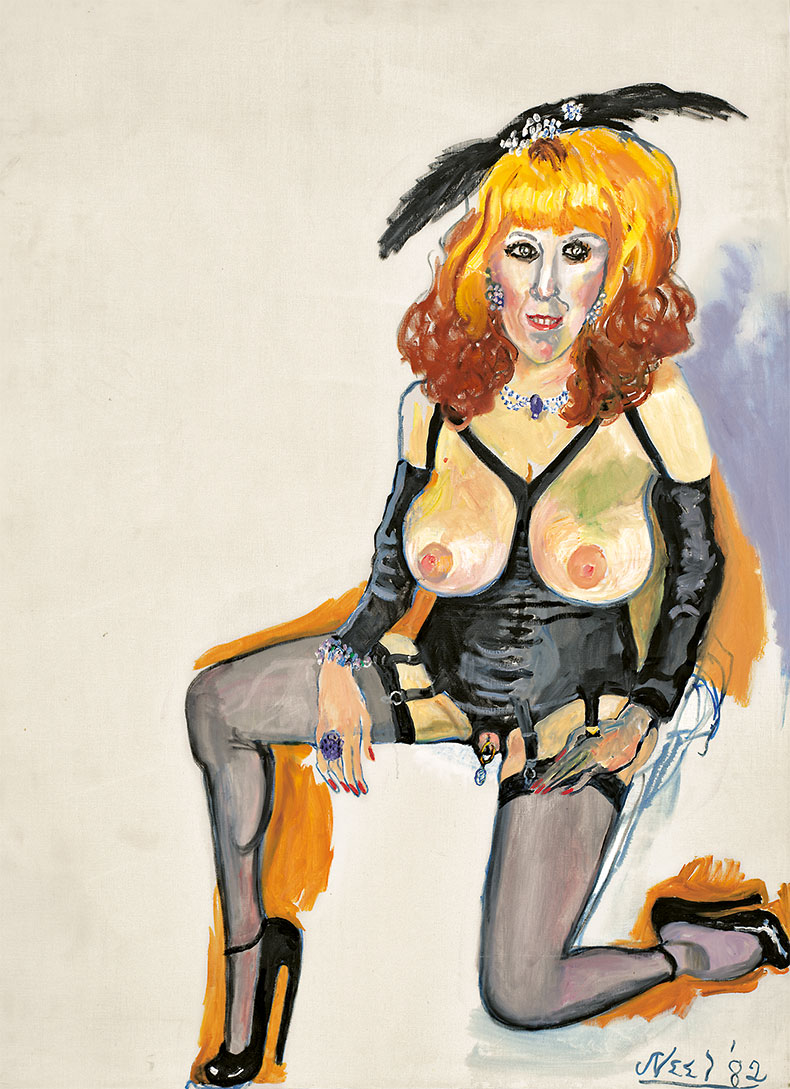
Annie Sprinkle (1982), Alice Neel. Courtesy the Estate of Alice Neel and David Zwirner; © Estate of Alice Neel
More promising are Neel’s pictures of bohemian life in Greenwich Village. Sometimes they have a somewhat cartoonish surrealistic air, such as the goatish portrait of the eccentric oral historian Joe Gould (1933), pictured nude with three sets of genitals, one on top of another. At other times they stage intimate scenes of domestic life, as in the water colour sketch Untitled (Alice Neel and John Rothschild in the Bathroom) of 1935, a post-coital scene in which she sits on the toilet pissing while her lover, his penis still erect, pisses into the sink under the running tap.
When we reach her paintings of Puerto Ricans in Spanish Harlem and of Communist intellectuals from the 1940s and ’50s, Neel has hit her stride, finding visual means to marry her ‘anarchic humanism’, as she called it, to her painterly gifts. Her sympathies extend in generous and unusual directions, as in T.B. Harlem (1940), which shows a patient recovering from brutal surgery for tuberculosis, or Georgie Arce No. 2 (1955), which shows an 11-year-old boy whom Neel met in the street and befriended, holding a toy knife casually in his right hand – a visual detail that takes on a darker significance when we learn that Georgie was imprisoned for murder 20 years after the painting was made.
Neel’s pictures become richer and stranger in the Lower Gallery. The curators attribute the development in Neel’s work to her experience of psychotherapy as a patient from 1958 onwards (‘if it hadn’t been for the psychologist my work would never have gotten before the world’), and in the canvases from the 1960s onwards she works with a new confidence, freedom and verve. The brushstrokes become bigger and bolder, more freehand and improvisatory; and more of the backgrounds to the pictures are left unfinished, so that the subjects seem to float free of their surroundings, the whole world around them turned into an auratic glow that brings out their personhood more vividly.
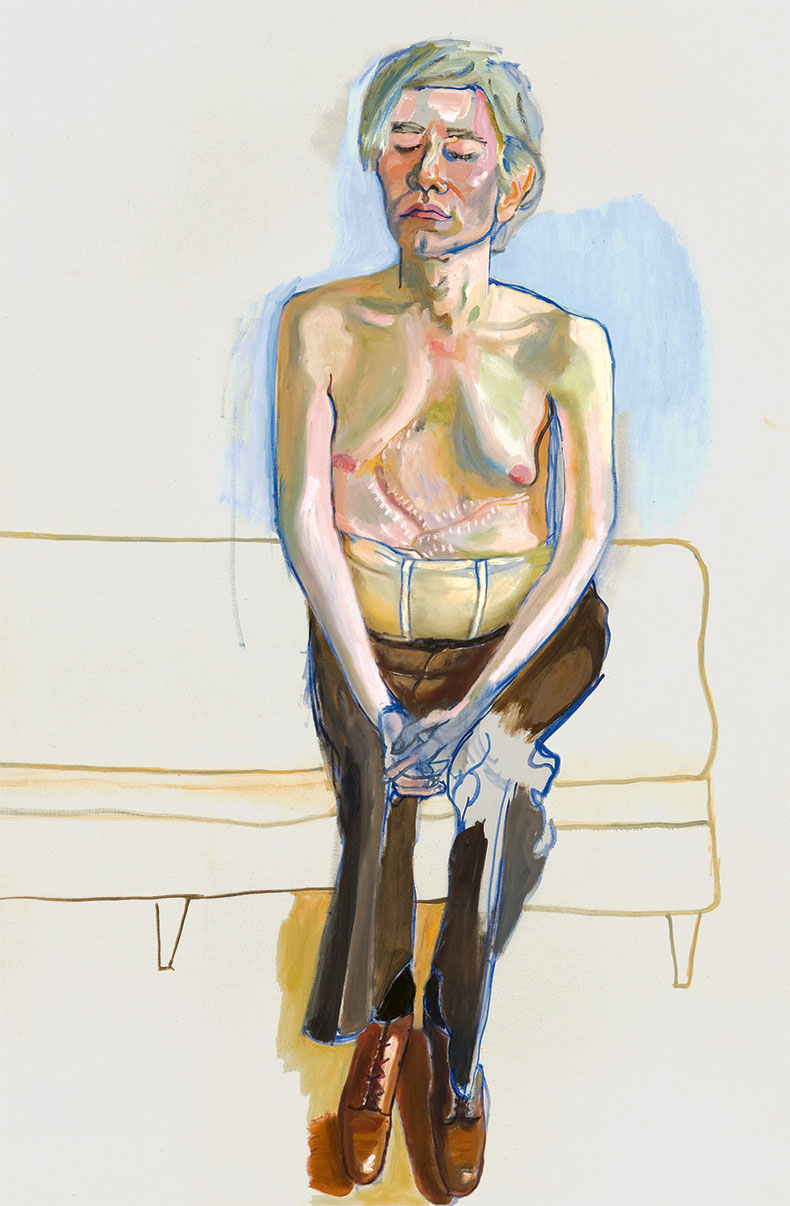
Andy Wahol (1970), Alice Neel. © The Estate of Alice Neel. Courtesy The Estate of Alice Neel and David Zwirner
Most striking in this regard is Black Draftee (James Hunter) from 1965, a picture of a Vietnam conscript in which only the head and left hand have been coloured, with the rest of the figure existing as a ghostly outline after her sitter was sent to war in the middle of the sessions and the painting left unfinished. Perhaps the highlight of the exhibition is Neel’s most famous single painting, the one that shows her most famous subject, Andy Warhol (1970). In a picture of startling tenderness and vulnerability, Neel gives us Warhol shirtless, exposing the surgical corset and the deep scars across his caved-in abdomen that he was left with after being shot by Valerie Solanas. As Marlene Dumas has said of this picture, ‘He looks a bit like a woman, male and female in one’, with his downcast gaze a sign of quiet resilience and delicacy, the face of a person inhabiting his damaged body with grace. Among the many paintings of New York artists, critics and activists from the last three decades of her life that make up Neel’s major achievement, it is a picture that encapsulates her commitment to the uniqueness of the person, seen in all their creaturely and social specificity.
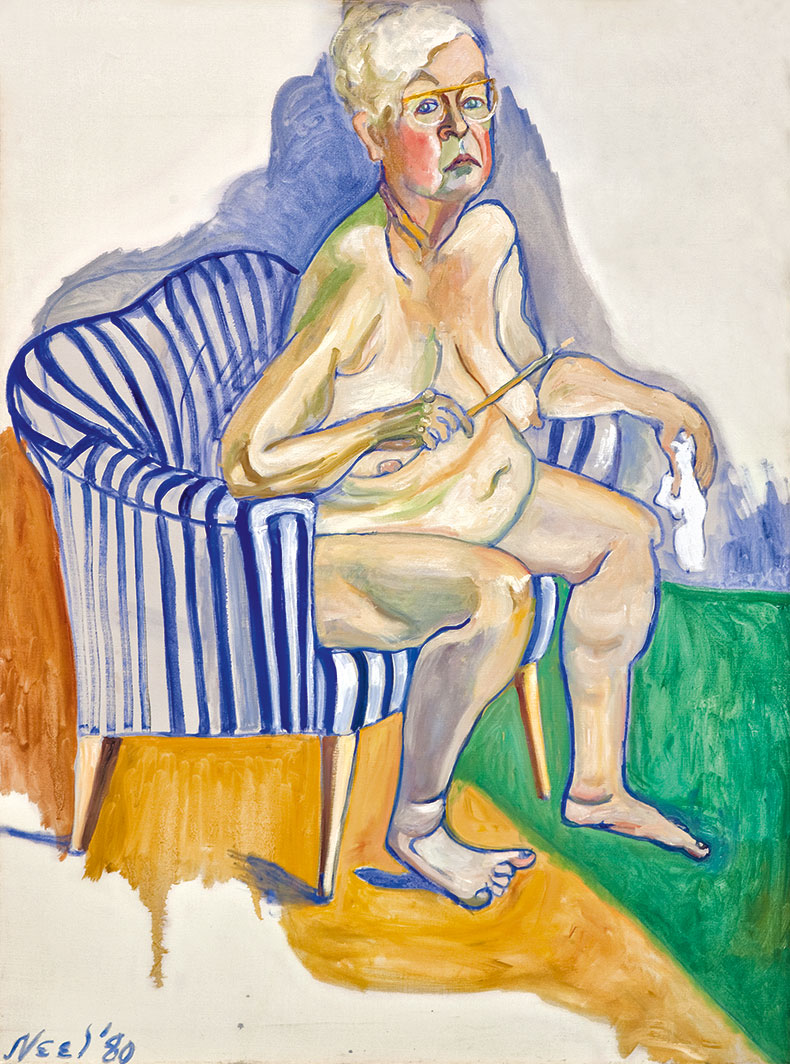
Self Portrait (1980), Alice Neel. Courtesy the Estate of Alice Neel and David Zwirner; © Estate of Alice Neel
‘Alice Neel: Hot Off the Griddle’ is at the Barbican Art Gallery, London, until 21 May.
From the May 2023 issue of Apollo. Preview and subscribe here.
Unlimited access from just $16 every 3 months
Subscribe to get unlimited and exclusive access to the top art stories, interviews and exhibition reviews.


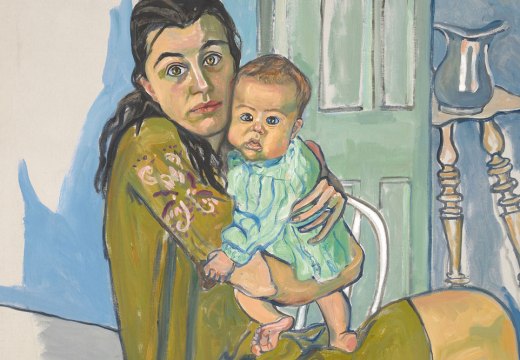
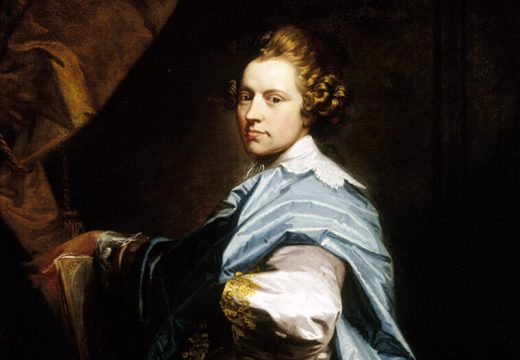
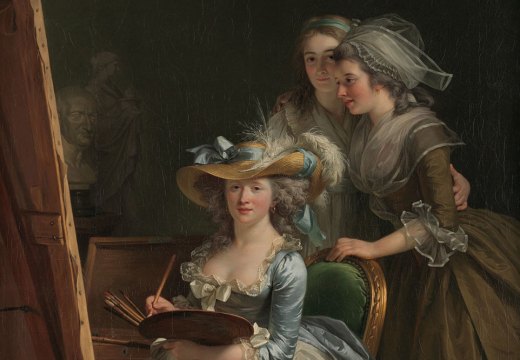









![Masterpiece [Re]discovery 2022. Photo: Ben Fisher Photography, courtesy of Masterpiece London](http://www.apollo-magazine.com/wp-content/uploads/2022/07/MPL2022_4263.jpg)
It’s time for the government of London to return to its rightful home